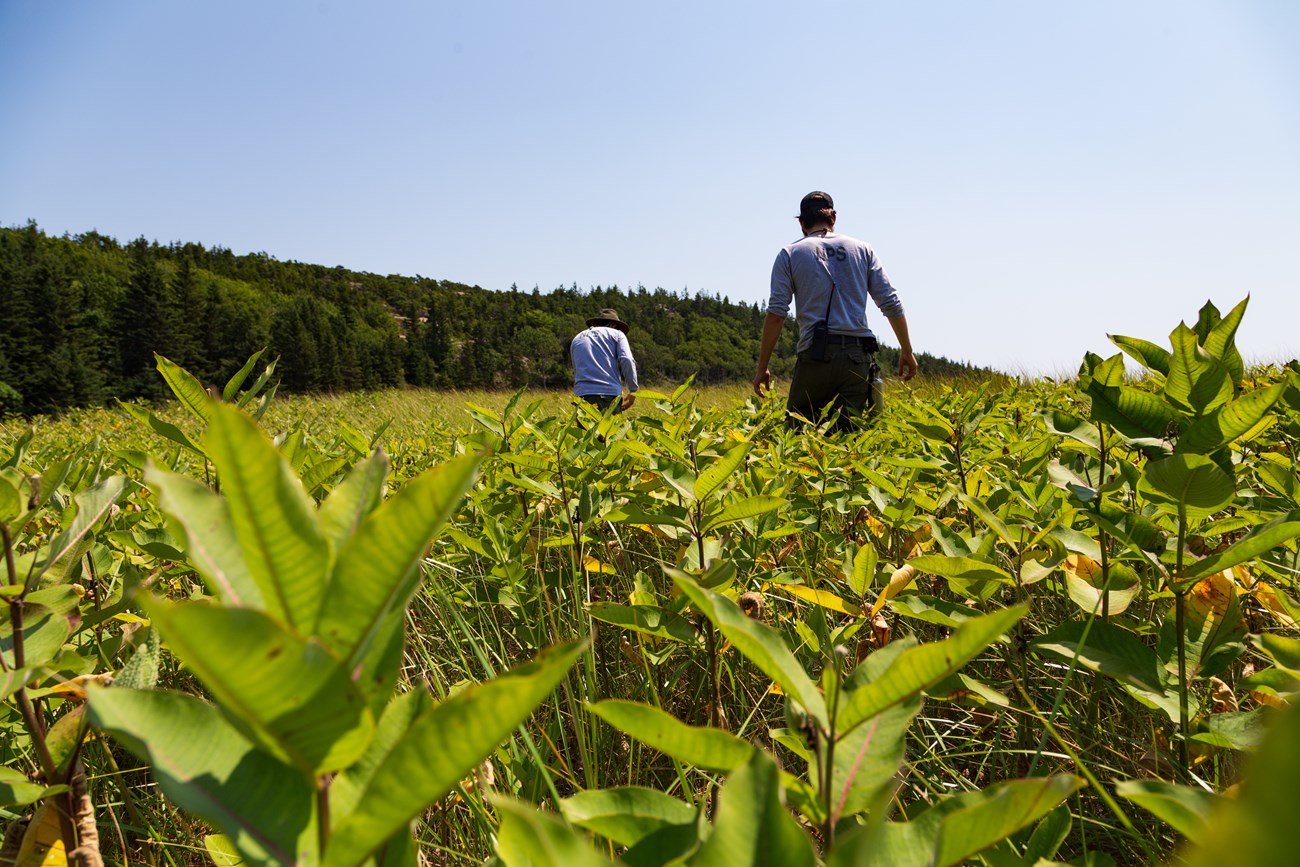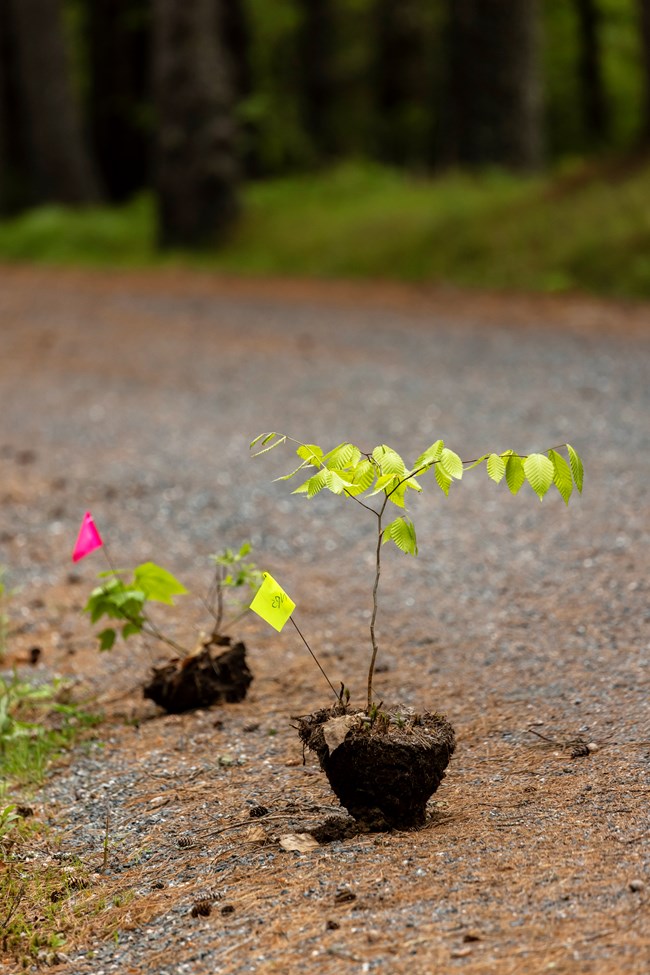Last updated: April 25, 2023
Article
Restoring Native Plants in the Great Meadow Wetland
Looking across the swaying grasses and brilliant blooming shrubs of the Great Meadow, you might think the wet meadow is in pristine condition. But, decades of disturbances have altered the way water flows through the wetland. Old road beds, ditches, and an undersized culvert at the outlet of the meadow cause highly variable water depths throughout the year. The wetland now drains too quickly during dry periods, and yet floods during heavy rain events that are becoming more common under climate change. Many native plants can’t handle these new conditions, and invasive species are threatening to take over.
In 2023, we will begin restoring native plants in areas where invasive species have recently been a problem. In future years we will expand restoration to areas disturbed during construction associated with other improvements to the meadow (e.g., trail improvements). Restoring native plants will have four primary benefits for the Great Meadow Wetland.
In 2023, we will begin restoring native plants in areas where invasive species have recently been a problem. In future years we will expand restoration to areas disturbed during construction associated with other improvements to the meadow (e.g., trail improvements). Restoring native plants will have four primary benefits for the Great Meadow Wetland.

Will Greene, Friends of Acadia
Restoring Wetland Plant Diversity and Ecological Communities
Years of research in the wetlands throughout Acadia show that plants that grow in wetlandswith less human disturbance, such as wooly-fruited sedge (Carex lasiocarpa), can’t tolerate the swings between dry and wet in the Great Meadow. Instead, stress-tolerant plants – for example plants found commonly in roadside ditches such as lake sedge (Carex lacustris) and invasive species such as glossy buckthorn (Rhamnus frangula) - are now abundant throughout the wetland. Restoring species typical of less disturbed wetlands is a primary goal of the Great Meadow restoration project, not only to help the plants return to Great Meadow, but because these species can also support healthier populations of bugs, birds, and bats.
Preventing the Reinvasion of Invasive Species
Acadia National Park spends significant resources each year controlling invasive plants in the Great Meadow. But, the invasive nature of these plants means control efforts are temporary. Restoring native plants after invasive species have been removed can prevent these undesirable species from returning, and reduce the resources needed for invasive species management in the park. Acadia National Park, Friends of Acadia, and Schoodic Institute are evaluating multiple methods of native plant restoration to determine which method is most effective at reducing reinvasion. This scientific approach to restoration helps the park learn about the best management approaches without delaying action.
Ashley L. Conti, Friends of Acadia
